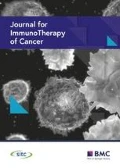Th17 and regulatory T (Treg) cells are integral in maintaining immune homeostasis and Th17-Treg misbalance associates with inflammation.
We demonstrate that in addition to natural (n)Treg and induced (i)Treg cells developed from naïve precursors, Th17 cells are a novel source of Foxp3+ cells by converting into ex-Th17 Foxp3+ cells, and this helps to reconcile the contradictory information about the relevance in particularly of Th17 subset in immune surveillance.
We identified IL-17A+Foxp3+ double-positive and ex-IL-17-producing IL-17A-Foxp3+ T cells to be the underlying mechanism of immune regulation in mesenchymal stem cell-mediated prolonged allograft survival. Further, we identified accumulation of IL17A+Foxp3+ and ex-Th17 Foxp3+ cells in tumor bearing mice, indicating progressive direct Th17-into-Treg cell conversion as a novel phenomenon in cancer.
Moreover, we determined the importance of the Th17 cell plasticity for tumor induction and/or progression in ROR-g-/- mice. Our data indicate that RORgt is required not only for Th17 development, but also for effective Treg cell induction. TGF-b1 induced Foxp3 expression was reduced in ROR-g -/- cells. Further, tumor bearing ROR-g-/- mice showed significantly less Foxp3+ Treg cells, but higher IFNg+ Tcells compared to wild type animals.
Increased infiltration of IL17+ and FoxP3+ CD4+ T cells in the human ovarian cancer ascites, with the presence of a distinct IL17+FoxP3+ subset, and a significant correlation between tumor-associated Th17 and Treg cells demonstrates the existence of Th17-Foxp3+ T cell inter-relationship in cancer patients.
Yin-yang of IL17+ and Foxp3+ is important principle for improved clinical approaches targeting responses against self, allo and/or neo-self.
Author information
Authors and Affiliations
Rights and permissions
This article is published under an open access license. Please check the 'Copyright Information' section either on this page or in the PDF for details of this license and what re-use is permitted. If your intended use exceeds what is permitted by the license or if you are unable to locate the licence and re-use information, please contact the Rights and Permissions team.
About this article
Cite this article
Downs-Canner, S., Ravindranathan, R., Edwards, R.P. et al. Ex-Th17 Foxp3+ T cells - a novel subset of Foxp3+ T cells induced in cancer. j. immunotherapy cancer 3 (Suppl 2), P273 (2015). https://doi.org/10.1186/2051-1426-3-S2-P273
Published:
DOI: https://doi.org/10.1186/2051-1426-3-S2-P273

